My latest E-Book “Mash Method” is live and it’s FREE! Check it out now at: http://www.mashelite.com/mashmethod
===================================
This book has several of the techniques that I used to set personal records and world records along with some of my latest techniques that I’m using to get my athletes and me hitting all-time numbers.
-wave training
-bands and chains contrasted with straight weight
-walk outs
-partials contrasted with full ROM
-Squats for vertical leap -Sled drags to set PR 40 yd dash times
And more!
http://www.mashelite.com/mashmethod
=====================================
Nutrition: Educate Yourself
By: Crystal McCullough, RN, MSN, USAW
Whether you are new to this whole fitness thing or you are an elite athlete in your sport, fueling properly is just as important as your physical training routine. Nutrition and training are two sides to the same coin. Now, the question is what are your goals?
Paleo. Zone. Ketogenic. Macros. These are all buzzwords we hear in today’s fitness circles, right? So, you ask, “What should I do? What is right for me?” There really isn’t a right or wrong answer. There is nothing fundamentally wrong with any of these diets. It truly depends on what works best for YOU. The goal with this article is to educate you on these popular diets that surround the fitness industry, provide you with my own experiences (yep, I’ve done them all), and let you decide! I’m not going to touch on cutting weight for a specific goal. This is day-to-day nutrition for any lifestyle.
Let’s dive in! And, to be clear, I am not knocking any of these diets, nor am I a Registered Dietician. My goal is to inform.
Paleo Diet
Robb Wolf, author of The Paleo Solution – The Original Human Diet (among other books), is credited with bringing this way of eating into the spotlight several years ago. There is plenty of research and science out there that support the Paleo Diet
The Paleo Diet works really well in helping those with Celiac, inflammatory issues, autoimmunity, and diabetes successfully manage their disease. When used as intended, it is a very healthy way to eat! You are able to keep your fat moderate, protein high, and carbs low. It suggests sticking to low glycemic index fruits and vegetables. Legumes (peanuts and beans), dairy, and grains tend to create an inflammatory response, hence the suggestion to avoid. For athletes, it can be a great option as well. The difference is adding in simple sugars and starches immediately post workout. There is a saying in CrossFit circles, “You can’t get all your calories from broccoli.” There is much truth to that statement, especially if you want to be strong!
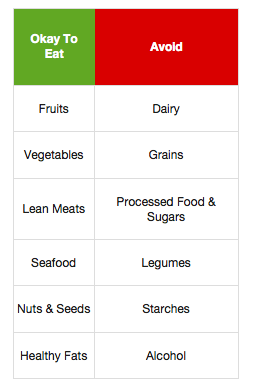
Above is a helpful chart that tells you foods that you should eat and foods you should avoid with this diet.
To note: prior to 2009, Robb Wolfe was actually the lead instructor on the CrossFit Nutrition certification courses and he promoted Paleo above all others. This relationship ended in 2009.
Here is where the problem lies and this stems from my own experience. I started CrossFit in 2010 and Paleo was all the rage with CrossFit gyms around the country. Paleo this, Paleo Challenge that. As a gym, we would do a 30-day challenge where we would go strict Paleo for those 30 days (cold turkey quit the junk). We would have get-togethers where we only brought ‘Paleo’ food and posted our favorite recipes online. This sounds amazing right? A support group! Well, this turned into shaming (at least in my experience) when you ate brown rice on a Tuesday and binge eating immediately post Challenge. People brought more ‘Paleo’ desserts to the gatherings than they did true Paleo food. So, you can see how this approach doesn’t change a person’s relationship with food nor does it create a sustainable nutrition plan? Paleo in and of itself can absolutely be sustainable if done properly.
This approach worked for me the first few months. I treated it as a lifestyle and would only indulge every so often with the desserts. However, quality was preached over quantity and the tendency to overeat, even if it was high quality food, didn’t work. My other issue would be my cheat meal on the weekend. It would contain so many calories (because I saw it as a reward for being good all week); I would undo so much of what I had worked so hard for during the week.

At the end of the day, in order to lose weight, you must burn more than you consume. In order to maintain weight, it should balance. If you consume more than you burn, you will gain weight. It isn’t necessarily that simple and there are many factors including hormone levels, body fat, lean muscle mass, sleep and stress that play a role. I will talk later about how you can combine Paleo with macros in order to thwart the whole binge eating!!
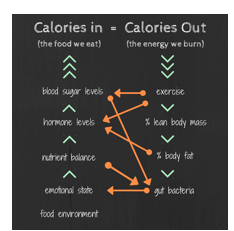
Zone Diet
Dr. Sears’ The Zone Diet is much more scientific. The ‘Zone’ is the optimal level your body should be in to control inflammation produced by diet. It is actually a clinical physiological state that can be blood tested.
There are 3 markers that can be tested:
1. TG/HDL (triglycerides and high density lipoprotein) – this is tested when you get your cholesterol checked and indicates insulin resistance in the liver.
2. AA/EPA – this will tell you how much inflammation is diet-induced in the body.
3. HbA1c – this test measures the average plasma glucose concentration over a 3-month period and is the test used in screening for diabetes.
Very few people, less than 1% actually, of the U.S. population is ‘in the zone.’ When a person is ‘in the zone’, they are less likely to develop chronic illnesses related to long-term inflammation. This type of diet is long term and requires a high level of dedication in order to reach and stay in the zone. Weighing and measuring food is a huge component of this diet.
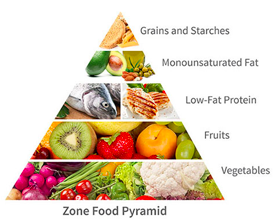
Picture courtesy of http://www.zonediet.com/the-zone-diet/
The pyramid above is similar to Paleo, in that you still eat fruits, vegetables, and lean proteins. The difference is grains and starches are encouraged in small amounts and fat is much lower.
Calculating how much a person should be eating is based on the 40/30/30 macronutrient (macro) rule: 40% Carbohydrates, 30% Protein, and 30% Fat. Blocks are used to describe how much of each macro is needed per meal or snack. A block is equivalent to 7 grams of protein, 9 grams of carbs, and 1.5 grams of fat. A 3-block meal would then include 21g of protein, 27g of carbs, and 4.5g of fat.
In it’s simplest form, we can take the chart from the CrossFit Journal article referenced at the bottom of this article in order to determine how many blocks a day one should eat.
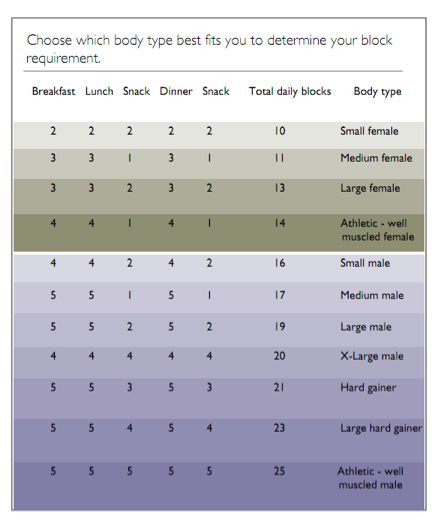
Here is where my issue lies with this diet. For me, as an athletic, well-muscled female, I would get 14 blocks a day. Calculated out for total daily calories consumed would be very low!! Remember how much 1 block is equal to in terms of macros?
14 x 7 g protein = 98g
14 x 9 g carb = 126g
14 x 1.5 g fat = 21g
Now, carbohydrates and protein are both 4 calories/gram, while fat is 9 calories/gram. So, with a little math, we find that I would only be consuming 1,085 calories per day with 14 blocks. In order for a female’s hormones to regulate normally, 1,200 calories is the minimum recommended.
I tried Zone for a couple of months. It was a ton of food, but the food was not calorically dense. I never could finish the 3 cups of broccoli on my plate that was required to meet the blocks I needed in the carbohydrate category!! And remember the quote I referenced earlier: ‘you can’t get all your calories from broccoli’? As athletes, we NEED the denser foods to fuel our workouts and get strong!!
Now, someone could absolutely add in more blocks in order to increase the daily caloric intake. The issue is with how low the chart is itself. For many, if they have no education in the art and science of nutrition, they will take the chart at face value and either get fed up with being hungry and quit the diet or continue under-nourishing their bodies. Neither is ideal! A good place to start is to know how many calories your body needs and base blocks off of those numbers rather than simply relying on the blocks chart itself.
Ketogenic/Carb Cycling
I am going to group these two together. The Ketogenic diet is high fat, moderate protein, low to no carb. The body can use glucose (simple sugar) or ketone bodies (fats broken down) for energy. The brain needs this energy to function. The muscle needs this energy to grow. The fat needs this energy to burn. The Ketogenic diet forces the body to use ketone bodies rather than glucose for these purposes.
In the 1920s, a doctor at the Mayo Clinic, Dr. Russell Wilder, developed this diet to treat epilepsy. According to The Charlie Foundation for Ketogenic Therapies, “an elevated level of ketone bodies in the blood, a state known as ketosis, leads to a reduction in the occurrence of epileptic seizures.“ Since that time, studies have revealed this diet can have therapeutic effects on diseases such as Type 2 Diabetes, obesity, and CVD. Even more interesting, there is emerging evidence that it could be beneficial for Alzheimer’s patients, cancer patients, and neuro patients.
**The Ketogenic diet is best done under the supervision of a doctor. For women, hormones could get out of whack if they aren’t taking in enough fat and have eliminated carbs out of the diet. There are test strips that a person can urinate on in order to see if they are in a state of ketosis or not. If they aren’t, they would need to up their dietary fat intake.
I have not had any personal experience with the full on Ketogenic diet. I have, however, spent several months carb cycling. My previous coach was an original Ketogenic supporter who wrote books on carb back loading and carb cycling. Carb back loading simply refers to intermittent fasting and timing of carbs (in the evening). Carb cycling refers to high and low carb days.
My personal experience with carb cycling was amazing while I was actively doing it. My first 10 days were spent not counting anything at all! Eat as much fat and protein as you want. I wish I still had the side-by-side comparison that showed the difference. I even did a CrossFit competition toward the end of those 10 days where I PR’d my thruster and my deadlift. After the initial 10 days, I got a carb re-feed where I could eat as many carbs as I wanted after 5pm until 10pm. Days would then go 3 days no carbs, 1 day clean carbs with dinner, 2 days no carbs, 1 day carb re-feed 5pm to 10pm. I did this for almost a year on repeat. I got strong and jacked!! Then, I decided to change things up and I had a really hard time re-introducing carbs back into my daily meals. Even the clean carbs that never bothered me before would bloat me and make me gassy. After a blood panel, it was realized my hormones were out of whack and my blood sugar was messed up. It took a few months for me to level out. Was it the carb cycling or my being a woman that caused it? Can’t say for sure, but I had a guy friend who was doing it at the same time who had some of the same issues with his blood sugar when he started adding the carbs back in.
I love my bacon and eggs, steak, and heavy cream, so it wasn’t hard at all to get on board with this plan. If I were to do it again (which I very well could), I would make sure to keep my hormones and blood sugar in check.
My suggestion if someone is planning on carb cycling is to research it first and again, enlist someone to help them know how long to go without carbs and how often to re-feed.
Macros
There are different names out there for macro counting: Flexible Dieting, if it Fits Your Macros, and our very own nutrition program, Eat What You Want. When someone follows a macro counting plan, gender, height, weight, age, daily activity, and workout intensity are all taken into consideration in order to create the perfect numbers to fit anyone’s goals. Protein is the constant, while carbs and fats can be manipulated. As changes are needed, it is easy to go back in and recalculate numbers. There are calculators out there that do the work for you (for the most part). Having a coach to fine tune and tweak as well as provide accountability is even better. This type of diet does require weighing and measuring as well as tracking through something like MyFitnessPal or similar in order to be successful.
DO NOT mistake ‘eating what you want’ as I can eat 9 donuts to get my 1800 calories. That is not what is being advocated here. What is being advocated is a balanced daily caloric intake of protein, carbs, and fats based on your personal goals. The sustainability aspect here is that if you feel like you just want that donut on Wednesday, skip your oatmeal for breakfast and eat the donut. Common sense would tell us to eat high quality, nutrient dense food 90% of the time. The difference is there is no shaming if you eat the donut AND you have not sabotaged your entire week if you use moderation and stick to the numbers laid out for you.
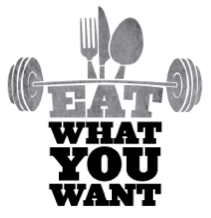
Here is where someone could eat Paleo and get all the benefits that accompany that way of eating by using macros to know how much should be consumed daily. These two diets compliment each other very well.
Time to wrap this up.
I know I’ve thrown a lot at you and have been long-winded. I’m a nutrition nerd and think everyone should know the options. There is plenty of research out there to support all of these diets. Some will say weighing and measuring is the only way. Others will say just eat high quality foods. And, yes, the science is more exact when you weigh and measure. The determining factor is how much work you are willing to put into your nutrition. Is it sustainable for you? Can you make it a lifestyle? Those are the questions you need to ask yourself.
==============================================
Check out one of the Online Teams:
• Eat and Lift What You Want
• Mash Mafia Bronze
• Mash Mafia Silver
• Mash Mafia Gold
• Eat What You Want
Check them out here: ⇒ Mash Mafia Online Teams
Sources:
http://www.zonediet.com/the-zone-diet/
Click to access cfjissue21_May04.pdf
https://www.charliefoundation.org/explore-ketogenic-diet/explore-1/introducing-the-diet
http://www.nature.com/ejcn/journal/v67/n8/full/ejcn2013116a.html#conflict-of-interest